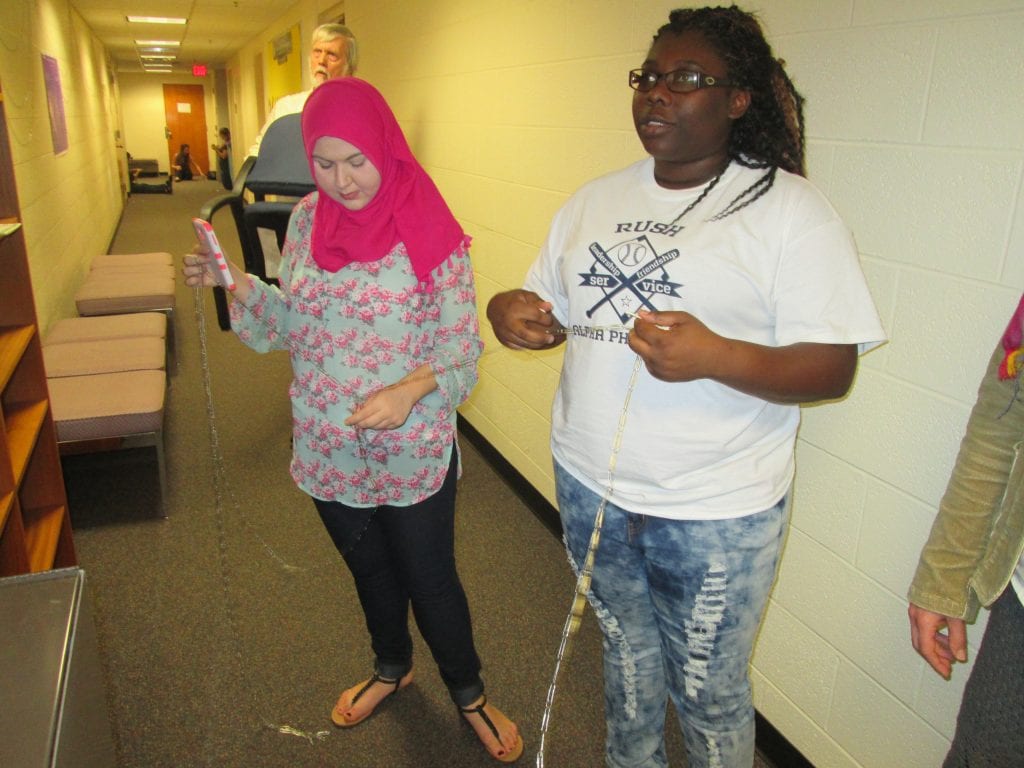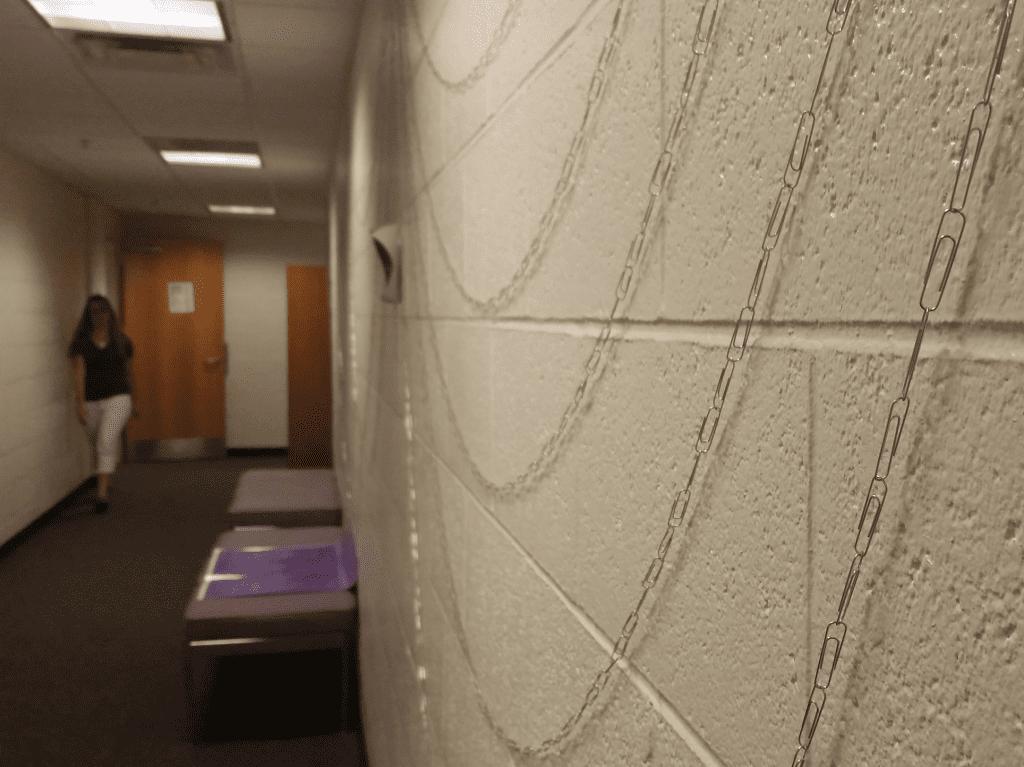Homicide Paperclip Chain
 Lining the walls of the sociology department are thousands of paperclips, 13,716 to be exact.
Lining the walls of the sociology department are thousands of paperclips, 13,716 to be exact.
Over 1,000 feet of paperclips circle the inner wall on the fourth floor of Howard Phillips Hall. Each paperclip represents one murder victim over the span of one year (2013) in the United States.
The idea emerged through the Homicide Research Working Group’s annual meeting last June. Kim Davies, author of The Murder Book: Examining Homicide, gave a presentation titled “Making the Number of Murders Real: Active Learning in a Murder Class.” In her presentation, she mentioned the paperclip project that she did at Georgia Regents University in Augusta, Georgia.
Starting in the fall, in Dr. Jay Corzine’s Sociology of Murder class, the project was combined with Dr. Lin Huff-Corzine’s class.
When they first began the project, the students didn’t know why they were putting together a string of paperclips. As they stood out on Memory Mall, the project was explained to them and to curious students passing by. The goal of their project was to help people realize just how many people are murdered each year.
“We tried to make tangible the number of murder victims,” Sarah Ann Sacra, graduate Teaching Assistant for Dr. Jay Corzine, said.
 Another goal of the project was to bring attention to the number of people that are impacted by each murder. Each paperclip represents not only one person murdered, but their family and friends.
Another goal of the project was to bring attention to the number of people that are impacted by each murder. Each paperclip represents not only one person murdered, but their family and friends.
For their future classes, similar exercises will be done. Huff-Corzine said that they may have students put chalk marks on a sidewalk, one for each murder, to see what the number of murders in a year or fill jars with M&Ms representing a year of murders.
